NABARD Assistant Manager Grade 'A' Mock Test - 5 - Bank Exams MCQ
30 Questions MCQ Test NABARD Assistant Manager Grade A Mock Test Series 2024 - NABARD Assistant Manager Grade 'A' Mock Test - 5
Study the following information carefully and answer the questions given below.
There are Ten persons namely Pravin, Sam, Raman, Seetha, Deepak, Yuvan, Vijay, Sandy, Vibi and Ajith are sitting in two parallel rows containing five people each in such a way that there is an equal distance between adjacent persons. People sitting in Row-1 facing north direction while people sitting in Row-2 facing south direction. Therefore people sitting in Row-1 face the people sitting in Row-2. They were born in following months among January, March, April, May, June, July and August. Exactly two persons were born in each of the month of April, May and June. All the above information is not necessarily in the same order.
Seetha sits exactly in the middle of the north facing row. Deepak sits between Vibi and Sandy and opposite to Yuvan. Pravin sits at the extreme right end of the south facing row. Only one person sits between the two persons who were born in April. Sam sits opposite to Raman and to the immediate right of the person, who was born in May month. Raman doesn’t face south direction. Sandy was born in August month. The person who was born in March sits to the immediate right of Ajith and opposite to the person who is born in April. The person born in January sits to the right of the person born in July but they don’t sit at any of the ends. Only one person sits between the two persons who were born in May.
Q. Who born on June sits immediate right of Yuvan
Sarah, Tom, and Lisa are three friends who live in the same neighborhood. Sarah is taller than Tom, and Tom is shorter than Lisa.
Q. Which of the following statements must be true?
| 1 Crore+ students have signed up on EduRev. Have you? Download the App |
Study the following information carefully and answer the questions given below.
There are Ten persons namely Pravin, Sam, Raman, Seetha, Deepak, Yuvan, Vijay, Sandy, Vibi and Ajith are sitting in two parallel rows containing five people each in such a way that there is an equal distance between adjacent persons. People sitting in Row-1 facing north direction while people sitting in Row-2 facing south direction. Therefore people sitting in Row-1 face the people sitting in Row-2. They were born in following months among January, March, April, May, June, July and August. Exactly two persons were born in each of the month of April, May and June. All the above information is not necessarily in the same order.
Seetha sits exactly in the middle of the north facing row. Deepak sits between Vibi and Sandy and opposite to Yuvan. Pravin sits at the extreme right end of the south facing row. Only one person sits between the two persons who were born in April. Sam sits opposite to Raman and to the immediate right of the person, who was born in May month. Raman doesn’t face south direction. Sandy was born in August month. The person who was born in March sits to the immediate right of Ajith and opposite to the person who is born in April. The person born in January sits to the right of the person born in July but they don’t sit at any of the ends. Only one person sits between the two persons who were born in May.
Q. In which of the following month the person who sit opposite to Seetha was born?
Study the following information and answer the given questions:
A word and number arrangement machine when given an input line of words and numbers rearranges them following a particular rule. The following is an illustration of input and rearrangement.
INPUT: while 22 window yells 12 become 36 cost 48 hole 97 73
Step I: become while 22 window yells 12 36 cost 48 hole 97 73
Step II: become 12 while 22 window yells 36 cost 48 hole 97 73
Step III: become 12 cost while 22 window yells 36 48 hole 97 73
Step IV: become 12 cost 22 while window yells 36 48 hole 97 73
Step V: become 12 cost 22 hole while window yells 36 48 97 73
Step VI: become 12 cost 22 hole 36 while window yells 48 97 73
Step VII: become 12 cost 22 hole 36 while 48 window yells 97 73
Step VIII: become 12 cost 22 hole 36 while 48 window 73 yells 97
Step VIII is the last step of the arrangement of the above input as the intended arrangement is obtained.
As per the rules followed in the above steps, find out in each of the following questions the appropriate steps for the given input.
Input: milk 47 simple 75 23 viva 16 sample elf 34
Q. How many steps would be needed to complete the given arrangement?
Study the following information carefully and answer the questions given below.
There are Ten persons namely Pravin, Sam, Raman, Seetha, Deepak, Yuvan, Vijay, Sandy, Vibi and Ajith are sitting in two parallel rows containing five people each in such a way that there is an equal distance between adjacent persons. People sitting in Row-1 facing north direction while people sitting in Row-2 facing south direction. Therefore people sitting in Row-1 face the people sitting in Row-2. They were born in following months among January, March, April, May, June, July and August. Exactly two persons were born in each of the month of April, May and June. All the above information is not necessarily in the same order.\
Seetha sits exactly in the middle of the north facing row. Deepak sits between Vibi and Sandy and opposite to Yuvan. Pravin sits at the extreme right end of the south facing row. Only one person sits between the two persons who were born in April. Sam sits opposite to Raman and to the immediate right of the person, who was born in May month. Raman doesn’t face south direction. Sandy was born in August month. The person who was born in March sits to the immediate right of Ajith and opposite to the person who is born in April. The person born in January sits to the right of the person born in July but they don’t sit at any of the ends. Only one person sits between the two persons who were born in May.
Q. Which of the following statements is definitely true?
Study the following information and answer the given questions
A word and number arrangement machine when given an input line of words and numbers rearranges them following a particular rule. The following is an illustration of input and rearrangement.
INPUT: while 22 window yells 12 become 36 cost 48 hole 97 73
Step I: become while 22 window yells 12 36 cost 48 hole 97 73
Step II: become 12 while 22 window yells 36 cost 48 hole 97 73
Step III: become 12 cost while 22 window yells 36 48 hole 97 73
Step IV: become 12 cost 22 while window yells 36 48 hole 97 73
Step V: become 12 cost 22 hole while window yells 36 48 97 73
Step VI: become 12 cost 22 hole 36 while window yells 48 97 73
Step VII: become 12 cost 22 hole 36 while 48 window yells 97 73
Step VIII: become 12 cost 22 hole 36 while 48 window 73 yells 97
Step VIII is the last step of the arrangement of the above input as the intended arrangement is obtained.
As per the rules followed in the above steps, find out in each of the following questions the appropriate steps for the given input.
Input: milk 47 simple 75 23 viva 16 sample elf 34
Q. Which word/number would be in the sixth position from the right end in step III?
These questions are based on the following information.
There are 7 family members P, Q, R, S, T, U and V going to a party. There are three generations in which only two are married couples. P is the grandfather of U who is a male. R is the son in law of S. V is the son of Q. S has only two children, both of the same gender. T is the sister in law of R.
Q. Who is T’s mother?
In each of the questions below are given some statements followed by some conclusions. You have to take the given statements to be true even if they seem to be at variance from commonly known facts. Read all the conclusions and then decide which of the given conclusions logically follows from the given statements disregarding commonly known facts.
Statements:
Only a few UPS are CPU.
No CPU is laptop.
Only a few laptops are desktops
Some desktops are printers.
Conclusions:
I. Some UPS are not CPU.
II. Some CPU are not desktops.
III. Some printers are CPU.
Study the following instruction carefully and answer the given questions
There are 7 cricket players playing on different days of a week and scores different run. Players are Ram, Sham, Mohan, Sohan, Archit, Virat and Rohit. They play from Monday to Sunday not in the same order. The run scored by them is 50, 100, 150, 10, 0, 99 and 49. (The order may be different).
Rohit was the first one to play. Rohit scored the highest run among the all. Archit and Sohan being private employs the played on weekend. Sohan played a day before Archit played. Sham played before Sohan and after Mohan. Mohan played on the mid – day of the week. Ram played 3 days before Sham played. Virat played well but couldn’t complete its century and scored 99 runs. Ram score 1/3 of the runs scored by Rohit. Sum of runs scored by Mohan and Archit is 59. Archit scored more runs than Mohan. Sham scored a duck. (Week starts from Monday)
Q. Who scored the lowest run and when did he played?
Study the following information carefully and answer the questions following it.
Eight leaders Narendra Modi, Imran Khan, Ashraf Ghani, Lotay Tshering, K P Oli, Xi Jinping, Mahinda Rajapakshe and Aung San Suu Kyi are sitting in a row. Four leaders are facing north and four learders are facing south. The leaders sitting at the end of the row are facing opposite direction (that is if one leader is facing south then the other leader will be facing north and vice versa).
There are four leaders sitting between Mahinda Rajapakshe and Lotay Tshering and both of them are facing the same direction and neither of them are sitting at the extreme end of the row. Imran Khan who is facing south is sitting to the immediate right of Mahinda Rajapakshe. K P Oli who is facing south is sitting to the immediate left of Lotay Tshering. Two leaders are sitting between Ashraf Ghani and Mahinda Rajapakshe and Ashraf Ghani is facing direction opposite to Mahinda Rajapakshe. Three leaders are sitting between Narendra Modi and Aung San Su Kyi and Narendra Modi is not the immediate neighbour of Imran Khan and Ashraf Ghani. The immediate neighbours of Ashraf Ghani are facing opposite direction (that is if one leader is facing south the other leader will be facing north and vice versa). Imran Khan is sitting second to the right of Xi Jinping.
Q. Who is sitting at the extreme ends?
Study the following instruction carefully and answer the given questions
There are 7 cricket players playing on different days of a week and scores different run. Players are Ram, Sham, Mohan, Sohan, Archit, Virat and Rohit. They play from Monday to Sunday not in the same order. The run scored by them is 50, 100, 150, 10, 0, 99 and 49. (The order may be different).
Rohit was the first one to play. Rohit scored the highest run among the all. Archit and Sohan being private employs the played on weekend. Sohan played a day before Archit played. Sham played before Sohan and after Mohan. Mohan played on the mid – day of the week. Ram played 3 days before Sham played. Virat played well but couldn’t complete its century and scored 99 runs. Ram score 1/3 of the runs scored by Rohit. Sum of runs scored by Mohan and Archit is 59. Archit scored more runs than Mohan. Sham scored a duck. (Week starts from Monday)
Q. How many runs were scored by Mohan?
Study the following information carefully and answer the following question given below:
‘X & Y’ means ‘X is mother of Y’
‘X $ Y’ means ‘X is father of Y’
‘X % Y’ means ‘X is daughter of Y’
‘X * Y’ means ‘X is husband of Y’
‘X # Y’ means ‘X is sister of Y’
Q. How is H related to E in the given expression ‘E $ F % G # H * I’?
Study the following instruction carefully and answer the given questions
There are 7 cricket players playing on different days of a week and scores different run. Players are Ram, Sham, Mohan, Sohan, Archit, Virat and Rohit. They play from Monday to Sunday not in the same order. The run scored by them is 50, 100, 150, 10, 0, 99 and 49. (The order may be different).
Rohit was the first one to play. Rohit scored the highest run among the all. Archit and Sohan being private employs the played on weekend. Sohan played a day before Archit played. Sham played before Sohan and after Mohan. Mohan played on the mid – day of the week. Ram played 3 days before Sham played. Virat played well but couldn’t complete its century and scored 99 runs. Ram score 1/3 of the runs scored by Rohit. Sum of runs scored by Mohan and Archit is 59.Archit scored more runs than Mohan. Sham scored a duck. (Week starts from Monday)
Q. Who scored a half century and when did he scores?
Study the following information carefully and answer the given questions.
In a certain code language,
“ offered interest larger disputed ” is written as ‘3V 3F 2H 3V’
“resolve formula central settlement” is written as ‘3U 3Y 2N 3F’
“title harmony mediation appointed” is written as ‘2U 2A 5L 4V’
“alternative inform condition national” is written as ‘5U 2M 4L 4N’
Q. Which of the following is the code of ‘relinquish’?
Study the information given below carefully and answer the questions that follow.
Point B is 6 m South of point A. C is 3 m South of B. D is 3 m West of C. E is 5 m North of D. F is 6 m East of E.
Q. In which direction is point F with respect to point A?
Study the following information carefully and answer the questions below:-
There are eight persons namely, P, Q,R, S, T, U, V and W born in the same month of different years viz, 1985, 1987, 1990, 1992, 1995, 2000, 2001 and 2002 and all are sitting in a row facing north , but not necessarily in the same order. The age was considered as on the year 2019.
W was born on a leap year and sits at any of the extreme end. W is 5 years younger than S, who sits second to the right of V, born in an even numbered year but not in 1990 and is an immediate neighbour of W. V is 12 years younger than Q, who is 5 years younger than U. There are three persons sitting between V and R, who is 3years older than Q, who is not to the right of R. There are as many persons between V and T is same as P and R. There is one person between U and R. T was not born in the odd numbered year.
Q. If T is born the year 1992, then who is born in the given year 2001?
Study the information given carefully and answer the question given below.
In a certain code language,
“ram farmer wheat crop” is coded as “Sm3, Gr6, Xt5, Dp4”
“harvest rice corn together” is coded as “It7, Se4, Dn4, Ur8”
“water plant daily grows” is coded as “Xr5, Qt5, Ey5, Hs5”.
Q. What will be the code for ‘assesse’ in the same language?
Study the following information carefully and answer the questions below:-
There are eight persons namely, P, Q, R, S, T, U, V and W born in the same month of different years viz, 1985, 1987, 1990, 1992, 1995, 2000, 2001 and 2002 and all are sitting in a row facing north , but not necessarily in the same order. The age was considered as on the year 2019
W was born on a leap year and sits at any of the extreme end. W is 5 years younger than S, who sits second to the right of V, born in an even numbered year but not in 1990 and is an immediate neighbour of W. V is 12 years younger than Q, who is 5 years younger than U. There are three persons sitting between V and R, who is 3years older than Q, who is not to the right of R. There are as many persons between V and T is same as P and R. There is one person between U and R. T was not born in the odd numbered year.
Q. Which among the following combination is correct?
Study the information given carefully and answer the question given below.
In a certain code language,
“ram farmer wheat crop” is coded as “Sm3, Gr6, Xt5, Dp4”
“harvest rice corn together” is coded as “It7, Se4, Dn4, Ur8”
“water plant daily grows” is coded as “Xr5, Qt5, Ey5, Hs5”.
Q. What will be the code for ‘beautiful earth’ in same language?
Study the following information carefully and answer the questions below:-
There are eight persons namely, P, Q, R, S, T, U, V and W born in the same month of different years viz, 1985, 1987, 1990, 1992, 1995, 2000, 2001 and 2002 and all are sitting in a row facing north , but not necessarily in the same order. The age was considered as on the year 2019
W was born on a leap year and sits at any of the extreme end. W is 5 years younger than S, who sits second to the right of V, born in an even numbered year but not in 1990 and is an immediate neighbour of W. V is 12 years younger than Q, who is 5 years younger than U. There are three persons sitting between V and R, who is 3years older than Q, who is not to the right of R. There are as many persons between V and T is same as P and R. There is one person between U and R. T was not born in the odd numbered year.
Q. If T and R interchanges their positions then who sits on the second right of T?
Read each sentence to find out whether there is any error in it. The error, if any, will be in one part of the sentence. Mark the part with the error as your answer. If there is no error, mark "No Error" as your answer. (Ignore the errors of punctuation, if any).
Since breaking down aromatic (A) / compounds is difficult, (B) / bacteria generally prefers simple carbon sources (C) / such as glucose for obtaining energy. (D) / No Error (E)
Read the passage given below and answer the questions that follow by choosing the correct/most appropriate options:
Around 85 per cent of children in India have reported being cyberbullied and it is the highest in the world, according to a new survey released by global computer security firm McAfee Corp Monday. Titled ‘Cyberbullying in Plain Sight’, the report is based on a 10-country survey to uncover new and “consequential trends” regarding cyberbullying. The survey also noted that the number of Indian children who reported having cyberbullied someone is also twice the international average. Around 45 per cent of children in India say they cyberbullied a stranger, compared to 17 per cent worldwide and 48 per cent said they cyberbullied someone they know, versus 21 per cent of kids in other countries.
The top three forms of cyberbullying reported in India were spreading false rumours (39 per cent), being excluded from groups or conversations (35 per cent) and name-calling (34 per cent). The survey was conducted from 15 June to 5 July by market research company MSI-ACI for McAfee Corp via emails that invited parents of children aged 10 to 18 years to complete an online questionnaire. It surveyed a total of 11,687 parents and their children from 10 countries, including the United States, United Kingdom, France, Germany, Australia, India, Canada, Japan, Brazil, and Mexico. The survey also said Indian children faced the highest number of “extreme forms of cyberbullying” in the world that including cases of racism, sexual harassment, and threats of physical harm.
Around 42 per cent of children in India have been the target of racist cyberbullying, which is 14 per cent higher than the rest of the world (at 28 per cent). As many as 36 per cent of Indian children reported being trolled, 29 per cent said they faced personal attacks, 30 per cent suffered sexual harassment, 28 per cent had threats of personal harm and 23 per cent suffered doxing. All of these forms of cyberbullying, the survey noted, stood at double the global average. “Cyberbullying in India reaches alarming highs _____ more than 1 in 3 kids face cyber racism, sexual harassment, and threats of physical harm as early as the age of 10 – making India the #1 nation for reported cyberbullying in the world,” said Gagan Singh, chief product officer at McAfee Corp. The survey also noted that 45 per cent of Indian children hid their cyberbullying experiences from parents, well below the global average of 64 per cent “perhaps due to the relative absence of conversation” around the issue. Singh said Indian parents displayed “important gaps of knowledge around cyberbullying but even more concerning, children aren’t considering behaviours like jokes and name-calling harmful online”.
In the absence of conversation and support, the survey said that Indian children were addressing cyberbullying themselves. Nearly three out of five (58 per cent) children said they deleted their social media accounts to avoid cyber bullying and 87 per cent said they talked to their friends about it.
Q. According to the passage the majority of the children in India have been a target of what kind of harassment?
Read each sentence to find out whether there is any error in it. The error, if any, will be in one part of the sentence. Mark the part with the error as your answer. If there is no error, mark "No Error" as your answer. (Ignore the errors of punctuation, if any).
Of all the forces or objects in the Universe that we (A) / cannot see including dark energy and dark matter, none has (B) / frustrated human curiosity so much as the invisible maws (C) / that shredded and swallow stars like so many specks of dust. (D) / No Error (E)
Read the passage given below and answer the questions that follow by choosing the correct/most appropriate options:
Around 85 per cent of children in India have reported being cyberbullied and it is the highest in the world, according to a new survey released by global computer security firm McAfee Corp Monday. Titled ‘Cyberbullying in Plain Sight’, the report is based on a 10-country survey to uncover new and “consequential trends” regarding cyberbullying. The survey also noted that the number of Indian children who reported having cyberbullied someone is also twice the international average. Around 45 per cent of children in India say they cyberbullied a stranger, compared to 17 per cent worldwide and 48 per cent said they cyberbullied someone they know, versus 21 per cent of kids in other countries.
The top three forms of cyberbullying reported in India were spreading false rumours (39 per cent), being excluded from groups or conversations (35 per cent) and name-calling (34 per cent). The survey was conducted from 15 June to 5 July by market research company MSI-ACI for McAfee Corp via emails that invited parents of children aged 10 to 18 years to complete an online questionnaire. It surveyed a total of 11,687 parents and their children from 10 countries, including the United States, United Kingdom, France, Germany, Australia, India, Canada, Japan, Brazil, and Mexico. The survey also said Indian children faced the highest number of “extreme forms of cyberbullying” in the world that including cases of racism, sexual harassment, and threats of physical harm.
Around 42 per cent of children in India have been the target of racist cyberbullying, which is 14 per cent higher than the rest of the world (at 28 per cent). As many as 36 per cent of Indian children reported being trolled, 29 per cent said they faced personal attacks, 30 per cent suffered sexual harassment, 28 per cent had threats of personal harm and 23 per cent suffered doxing. All of these forms of cyberbullying, the survey noted, stood at double the global average. “Cyberbullying in India reaches alarming highs _____ more than 1 in 3 kids face cyber racism, sexual harassment, and threats of physical harm as early as the age of 10 – making India the #1 nation for reported cyberbullying in the world,” said Gagan Singh, chief product officer at McAfee Corp. The survey also noted that 45 per cent of Indian children hid their cyberbullying experiences from parents, well below the global average of 64 per cent “perhaps due to the relative absence of conversation” around the issue. Singh said Indian parents displayed “important gaps of knowledge around cyberbullying but even more concerning, children aren’t considering behaviours like jokes and name-calling harmful online”.
In the absence of conversation and support, the survey said that Indian children were addressing cyberbullying themselves. Nearly three out of five (58 per cent) children said they deleted their social media accounts to avoid cyber bullying and 87 per cent said they talked to their friends about it.
Q. In this question, a sentence (in bold) from the passage has been divided into four parts (A), (B), (C) and (D). Read the sentence to find out whether there is any grammatical error in it. The error if any will be in one part of the sentence. If there is No error the answer is 'No Error/(E)'. Ignore the error of punctuation if any.
Around 45 per cent of children in India say they cyberbullied (A)/ a stranger, compared to 17 per cent worldwide and (B)/ 48 per cent said they cyberbullied someone they know, (C)/ versus 21 per cent of kids in other countries. (D)/ No Error(E)
Read each sentence to find out whether there is any error in it. The error, if any, will be in one part of the sentence. Mark the part with the error as your answer. If there is no error, mark "No Error" as your answer. (Ignore the errors of punctuation, if any).
Many studies have pointed out that (A) / babies born via C-section have (B) / less bacterial exposure, which in turn alterates (C) / their immunity and gut microbiome diversity. (D) / No Error (E)
Read the passage given below and answer the questions that follow by choosing the correct/most appropriate options:
Around 85 per cent of children in India have reported being cyberbullied and it is the highest in the world, according to a new survey released by global computer security firm McAfee Corp Monday. Titled ‘Cyberbullying in Plain Sight’, the report is based on a 10-country survey to uncover new and “consequential trends” regarding cyberbullying. The survey also noted that the number of Indian children who reported having cyberbullied someone is also twice the international average. Around 45 per cent of children in India say they cyberbullied a stranger, compared to 17 per cent worldwide and 48 per cent said they cyberbullied someone they know, versus 21 per cent of kids in other countries.
The top three forms of cyberbullying reported in India were spreading false rumours (39 per cent), being excluded from groups or conversations (35 per cent) and name-calling (34 per cent). The survey was conducted from 15 June to 5 July by market research company MSI-ACI for McAfee Corp via emails that invited parents of children aged 10 to 18 years to complete an online questionnaire. It surveyed a total of 11,687 parents and their children from 10 countries, including the United States, United Kingdom, France, Germany, Australia, India, Canada, Japan, Brazil, and Mexico. The survey also said Indian children faced the highest number of “extreme forms of cyberbullying” in the world that including cases of racism, sexual harassment, and threats of physical harm.
Around 42 per cent of children in India have been the target of racist cyberbullying, which is 14 per cent higher than the rest of the world (at 28 per cent). As many as 36 per cent of Indian children reported being trolled, 29 per cent said they faced personal attacks, 30 per cent suffered sexual harassment, 28 per cent had threats of personal harm and 23 per cent suffered doxing. All of these forms of cyberbullying, the survey noted, stood at double the global average. “Cyberbullying in India reaches alarming highs _____ more than 1 in 3 kids face cyber racism, sexual harassment, and threats of physical harm as early as the age of 10 – making India the #1 nation for reported cyberbullying in the world,” said Gagan Singh, chief product officer at McAfee Corp. The survey also noted that 45 per cent of Indian children hid their cyberbullying experiences from parents, well below the global average of 64 per cent “perhaps due to the relative absence of conversation” around the issue. Singh said Indian parents displayed “important gaps of knowledge around cyberbullying but even more concerning, children aren’t considering behaviours like jokes and name-calling harmful online”.
In the absence of conversation and support, the survey said that Indian children were addressing cyberbullying themselves. Nearly three out of five (58 per cent) children said they deleted their social media accounts to avoid cyber bullying and 87 per cent said they talked to their friends about it.
Q. What is the central theme of the passage?
The question below consists of a set of six labelled sentences. They are all sentences of the same paragraph but their order has been jumbled. Sentence D given below is the fourth sentence in the correct order. Arrange the other five sentences in their correct order to make a coherent paragraph and answer the questions that follow
A: Mere suspicion is enough for funding to be cut off; publicity guarantees that careers can be effectively ended.
B: Forgeries that take the form of pastiches in which the forger intersperses fake and real parts can be defended as mere mistakes or aberrant misreading.
C: Scientists fudging data have no such defences.
D: Given the importance of interpretation in historical and literary scholarship, humanities researchers are in a position where they can explain away deliberate and even systematic distortion.
E: In science, even questionable examples of research fraud are harshly punished.
F: But no such mechanism exists in humanities - much of what humanities researchers call research does not lead to results that are replicable by other scholars.
Q. Which is the second sentence in the correct order?
Read the passage given below and answer the questions that follow by choosing the correct/most appropriate options:
Around 85 per cent of children in India have reported being cyberbullied and it is the highest in the world, according to a new survey released by global computer security firm McAfee Corp Monday. Titled ‘Cyberbullying in Plain Sight’, the report is based on a 10-country survey to uncover new and “consequential trends” regarding cyberbullying. The survey also noted that the number of Indian children who reported having cyberbullied someone is also twice the international average. Around 45 per cent of children in India say they cyberbullied a stranger, compared to 17 per cent worldwide and 48 per cent said they cyberbullied someone they know, versus 21 per cent of kids in other countries.
The top three forms of cyberbullying reported in India were spreading false rumours (39 per cent), being excluded from groups or conversations (35 per cent) and name-calling (34 per cent). The survey was conducted from 15 June to 5 July by market research company MSI-ACI for McAfee Corp via emails that invited parents of children aged 10 to 18 years to complete an online questionnaire. It surveyed a total of 11,687 parents and their children from 10 countries, including the United States, United Kingdom, France, Germany, Australia, India, Canada, Japan, Brazil, and Mexico. The survey also said Indian children faced the highest number of “extreme forms of cyberbullying” in the world that including cases of racism, sexual harassment, and threats of physical harm.
Around 42 per cent of children in India have been the target of racist cyberbullying, which is 14 per cent higher than the rest of the world (at 28 per cent). As many as 36 per cent of Indian children reported being trolled, 29 per cent said they faced personal attacks, 30 per cent suffered sexual harassment, 28 per cent had threats of personal harm and 23 per cent suffered doxing. All of these forms of cyberbullying, the survey noted, stood at double the global average. “Cyberbullying in India reaches alarming highs _____ more than 1 in 3 kids face cyber racism, sexual harassment, and threats of physical harm as early as the age of 10 – making India the #1 nation for reported cyberbullying in the world,” said Gagan Singh, chief product officer at McAfee Corp. The survey also noted that 45 per cent of Indian children hid their cyberbullying experiences from parents, well below the global average of 64 per cent “perhaps due to the relative absence of conversation” around the issue. Singh said Indian parents displayed “important gaps of knowledge around cyberbullying but even more concerning, children aren’t considering behaviours like jokes and name-calling harmful online”.
In the absence of conversation and support, the survey said that Indian children were addressing cyberbullying themselves. Nearly three out of five (58 per cent) children said they deleted their social media accounts to avoid cyber bullying and 87 per cent said they talked to their friends about it.
Q. Which of the following is/are correct according to the given passage?
A. ‘Cyberbullying in Plain Sight’, the report is based on a 10-country survey to uncover new and “consequential trends” regarding cyberbullying.
B. In the presence of conversation and support, the survey said that Indian children were addressing cyberbullying themselves
C. Indian parents displayed “important gaps of knowledge around cyberbullying but even more concerning, children are considering behaviours like jokes and name-calling harmful online”.
In each question below, a sentence is given with an idiom/phrase printed in bold type. That part may contain a grammatical error. Each sentence is followed by four alternatives. Find out which option should replace the phrase/idiom given in bold to correct the error, if there is any, and to make the sentence grammatically meaningful and correct. If the sentence is correct as it is and ‘No correction is required’, mark 5) as the answer.
It's a tempting offer, but I'm afraid I'm going to have to place a rain check on that one.
Read the passage given below and answer the questions that follow by choosing the correct/most appropriate options:
Around 85 per cent of children in India have reported being cyberbullied and it is the highest in the world, according to a new survey released by global computer security firm McAfee Corp Monday. Titled ‘Cyberbullying in Plain Sight’, the report is based on a 10-country survey to uncover new and “consequential trends” regarding cyberbullying. The survey also noted that the number of Indian children who reported having cyberbullied someone is also twice the international average. Around 45 per cent of children in India say they cyberbullied a stranger, compared to 17 per cent worldwide and 48 per cent said they cyberbullied someone they know, versus 21 per cent of kids in other countries.
The top three forms of cyberbullying reported in India were spreading false rumours (39 per cent), being excluded from groups or conversations (35 per cent) and name-calling (34 per cent). The survey was conducted from 15 June to 5 July by market research company MSI-ACI for McAfee Corp via emails that invited parents of children aged 10 to 18 years to complete an online questionnaire. It surveyed a total of 11,687 parents and their children from 10 countries, including the United States, United Kingdom, France, Germany, Australia, India, Canada, Japan, Brazil, and Mexico. The survey also said Indian children faced the highest number of “extreme forms of cyberbullying” in the world that including cases of racism, sexual harassment, and threats of physical harm.
Around 42 per cent of children in India have been the target of racist cyberbullying, which is 14 per cent higher than the rest of the world (at 28 per cent). As many as 36 per cent of Indian children reported being trolled, 29 per cent said they faced personal attacks, 30 per cent suffered sexual harassment, 28 per cent had threats of personal harm and 23 per cent suffered doxing. All of these forms of cyberbullying, the survey noted, stood at double the global average. “Cyberbullying in India reaches alarming highs _____ more than 1 in 3 kids face cyber racism, sexual harassment, and threats of physical harm as early as the age of 10 – making India the #1 nation for reported cyberbullying in the world,” said Gagan Singh, chief product officer at McAfee Corp. The survey also noted that 45 per cent of Indian children hid their cyberbullying experiences from parents, well below the global average of 64 per cent “perhaps due to the relative absence of conversation” around the issue. Singh said Indian parents displayed “important gaps of knowledge around cyberbullying but even more concerning, children aren’t considering behaviours like jokes and name-calling harmful online”.
In the absence of conversation and support, the survey said that Indian children were addressing cyberbullying themselves. Nearly three out of five (58 per cent) children said they deleted their social media accounts to avoid cyber bullying and 87 per cent said they talked to their friends about it.
Q. Choose the Synonym of the word 'Global'.
|
14 docs|63 tests
|
|
14 docs|63 tests
|


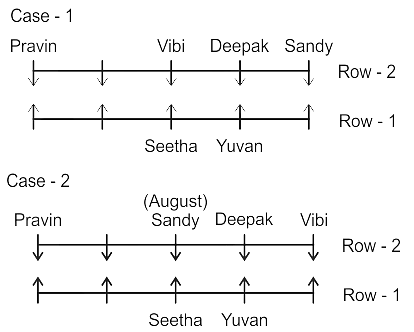

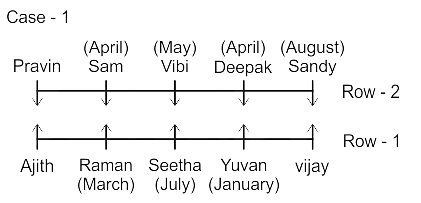
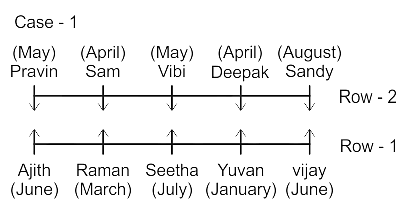
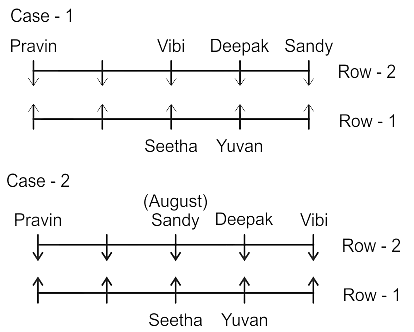
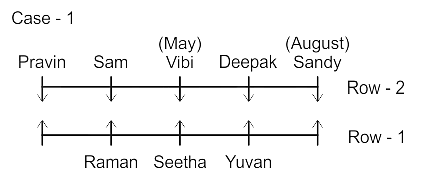
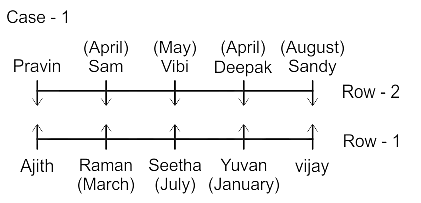
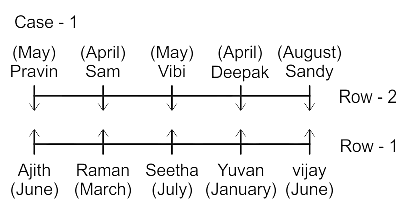

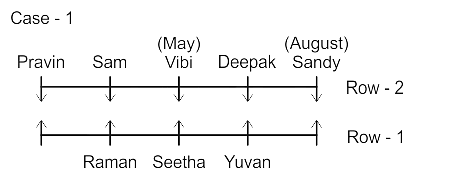

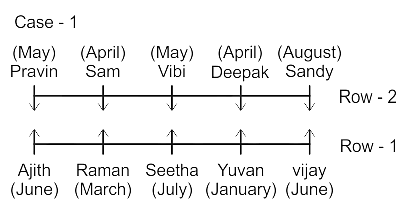
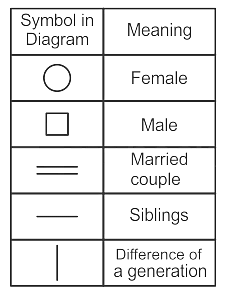
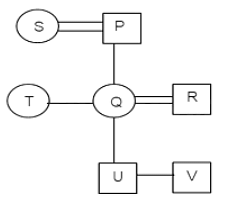

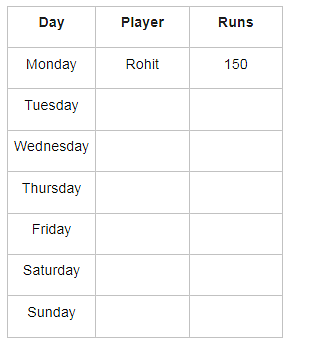
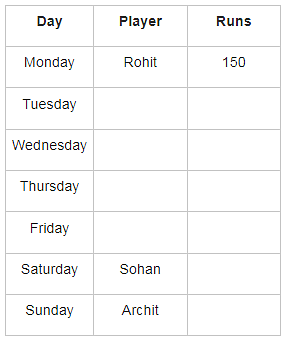
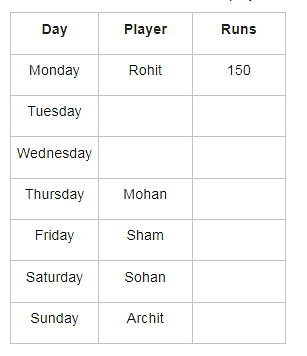

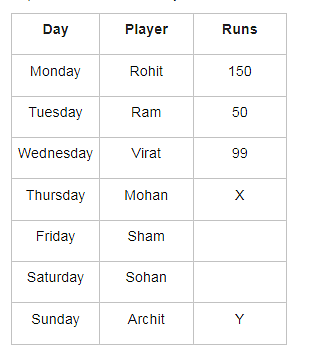
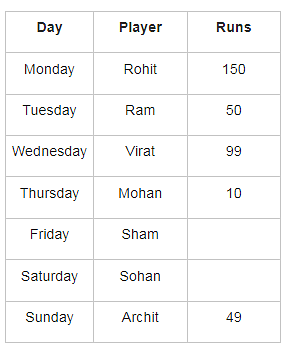
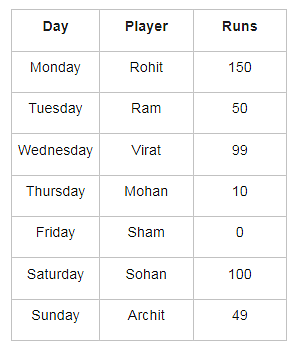
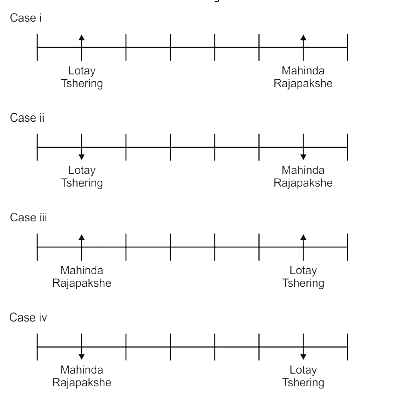
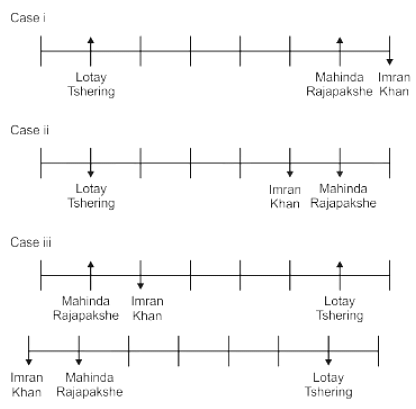
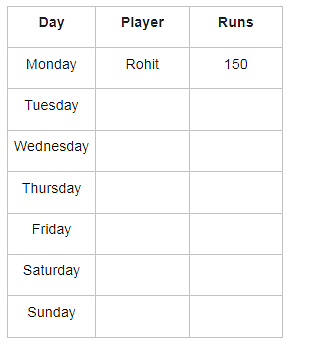
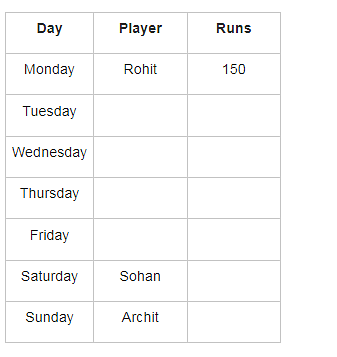
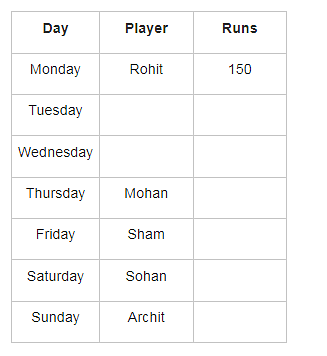
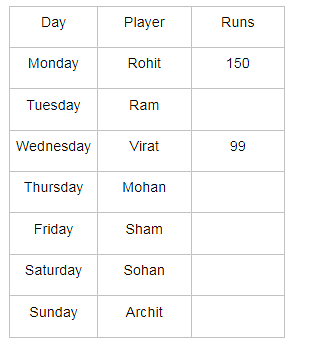
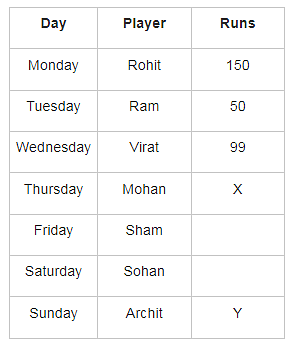
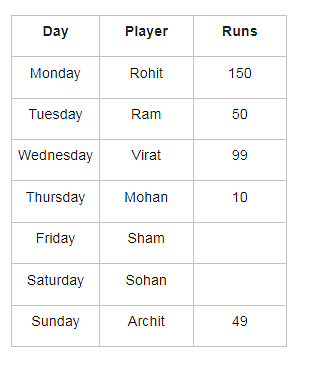
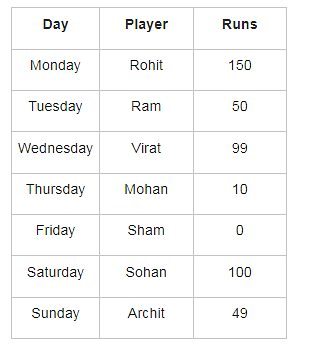
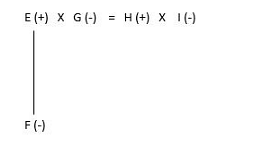
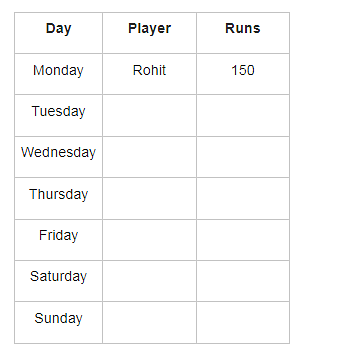

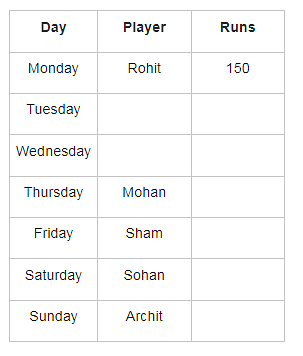
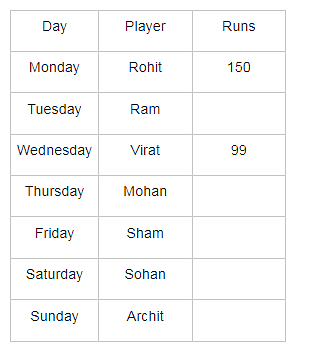
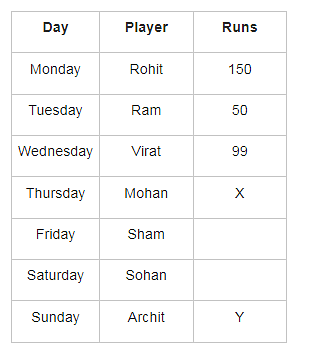
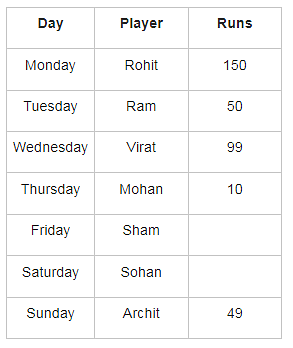
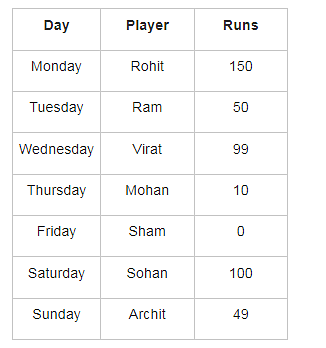
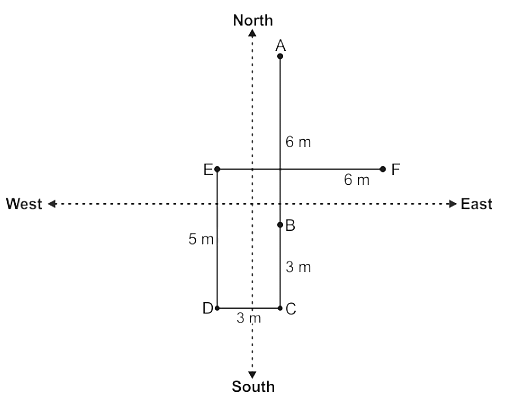


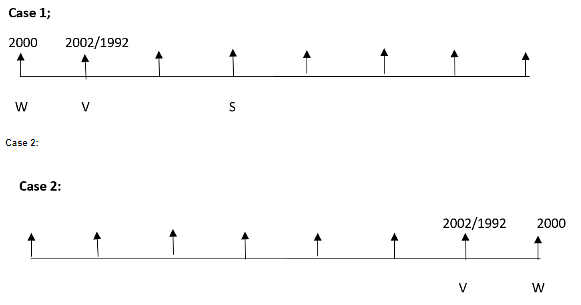
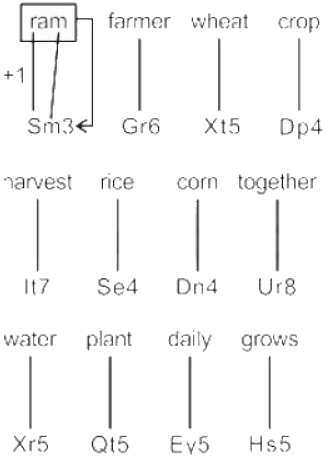
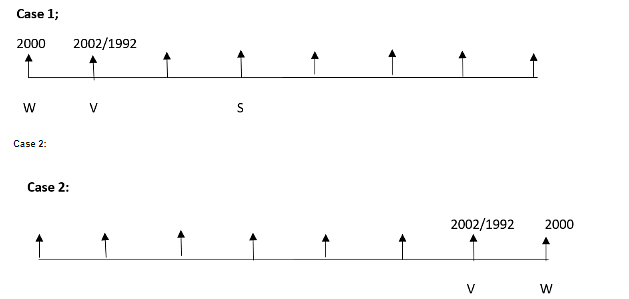 Now in the above case 2, we cannot make sit S to the second right of V, as they are facing north and there is only one place to the right of V and already W is sitting there, so this case gets discarded here and we will continue with the case 1.
Now in the above case 2, we cannot make sit S to the second right of V, as they are facing north and there is only one place to the right of V and already W is sitting there, so this case gets discarded here and we will continue with the case 1.














